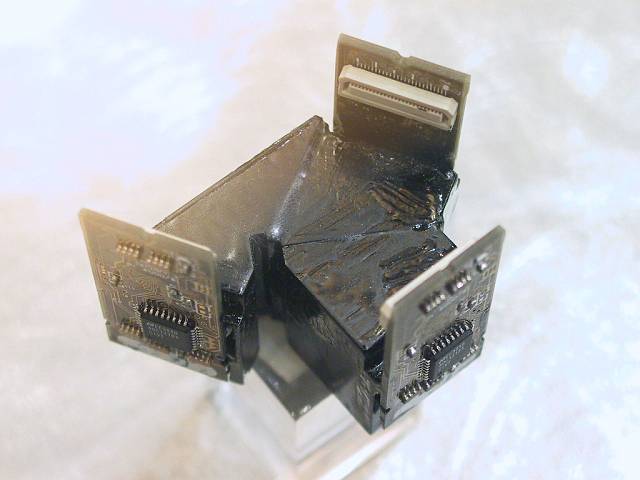 Originally posted by Damn Brit
Originally posted by Damn Brit 
Let's settle for the Off Brand forum shall we?
Leave it where it is. It doesn't matter really.
AFAIK, Lumolabs isn't another brand (yet)

On another note ...
I am learning that Foveon studied the idea in 2000 with their Foveon studio camera
->
http://dicklyon.com/tech/Photography/PICS2000-Lyon.pdf
It wasn't mount compatible with anything. But in 2000, they concluded: "
We expect that due to its inherent advantages of one-shot alias-free color-accurate sensing, the prism-based color separation approach will become the dominant approach for high-end professional photography".
<UPDATE BEGIN>
In another
post kxr4trids provided an interesting link with images to the Foveon studio camera:

<UPDATE END>
Yet another detail. I found dimensions for the Philips type trichroic prism assembly (TPA) as invented in Europe by Philips in 1960 (cf. attachments below).
[source:
Seperation Prism Technical Data]
If I take the entire width of the exit planes in the diagram (about 1 inch each), the entire length of the assembly would be 1.75x the width.
With a chip height of 16mm, this would require a registration distance of 28mm.
With a chip height of 24mm, this would require a registration distance of 42mm.
The Pentax K mount has a registration distance of 45.46mm, so both sensor sizes should be feasible, although the FF type is on the edge of things.
If I only take the width of the exit planes as drawn in the diagram (denoted "20"), then the entire length of the assembly would be 3.9x the width.
Even with a chip height of 16mm, then this would require a registration distance larger than K mount. But I believe the area denoted "20" serves illustration purposes only -- as I don't see what is special with the inclination angle of the initial ray.
EDIT: I just found their spec sheet
Separation Prism Configuration
They specify for a 35mm TPA suitable for f/2.8: 115mm length and 2000g weight. Clearly too heavy and too large for my idea.
Closest comes their version B9901 for a chip 15mm high: 52mm length and 160g weight.
They specify an optical air path-length, which is considerably less: E.g., 29.5mm rather than 52mm for the B9901. It may well be that the prism may be larger than the mirror box as long as the optical air path-length doesn't exceed the registration distance. This would be due to the diffraction index of glass within the box. If so (I have to think about it -- and if this doesn't induce optical aberrations...), then the TPA fits an enlarged mirror box for APS-C sized sensors, even when supporting f/1.4.


 Similar Threads
Similar Threads 




 :
:














